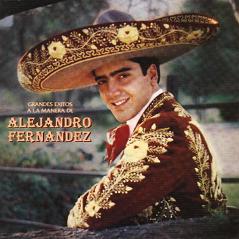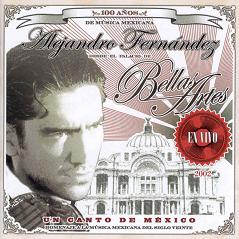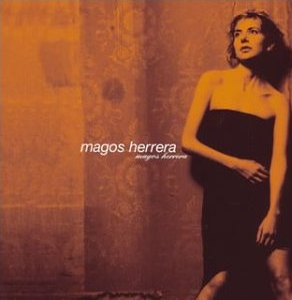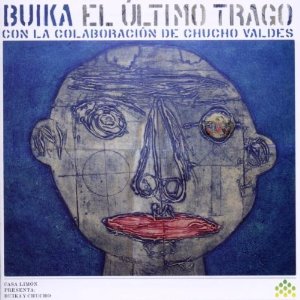
The music of Mexico is highly diverse, featuring a wide range of musical genres and performance styles. It has been influenced by a variety of cultures, primarily deriving from Europeans, Indigenous, and Africans. Music became an expression of Mexican nationalism starting in the nineteenth century.

María Luz Casal Paz is a Spanish rock singer. She grew up in Boimorto, Galicia (Spain), took singing, piano and ballet classes, and moved to Madrid to pursue a career as a musician.
"You Belong to My Heart" is the name of an English-language version of the Mexican Bolero song "Solamente una vez". This song was composed by Mexican songwriter Agustín Lara and originally performed by singer Ana María González and tenor José Mojica in the 1941 film Melodías de América.

Pedro Vargas Mata was a Mexican tenor and actor, from the golden age of Mexican cinema, participating in more than 70 films. He was known as the "Nightingale of the Americas", "Song Samurai" or "Continental Tenor".

Antonia del Carmen Peregrino Álvarez, known by her stage name Toña la Negra, was a Mexican singer and actress of partial Haitian ancestry, known for her interpretation of boleros and canciones written by Agustín Lara.
"Dos gardenias" is a bolero written in 1945 by Cuban composer and pianist Isolina Carrillo. Widely considered a standard of the Latin music repertoire, the song became a hit for Daniel Santos in 1948, due to his recording with La Sonora Matancera with an arrangement by Pérez Prado. Years later the composition would achieve international fame beyond the Spanish-speaking world thanks to Ibrahim Ferrer's 1996 recording with the Buena Vista Social Club collective.

Grandes Éxitos a la Manera de Alejandro Fernández is the third album recorded by Mexican singer Alejandro Fernández and was produced by Pedro Ramírez. In this album, Fernández interprets classic songs of great composers like Luis Demetrio and Armando Manzanero. He shot a video for the song "A Pesar De Todo". Other songs known from this album is "Si Dios Me Quita La Vida". Despite the title, this is not a greatest hits compilation.

Un Canto de México is the tenth album by Mexican singer Alejandro Fernández. It was recorded during a performance in the concert hall of the "Palacio de Bellas Artes". The concert paid tribute to Mexico's greatest singers and songwriters of some of the great Mexican songs of the last century.

Magos Herrera is a Mexican jazz singer, songwriter, producer, and educator. She sings in English, Spanish, and Portuguese, and has collaborated with Javier Limón, saxophonist Tim Ries, Aaron Goldberg, Pedro Aznar, Ed Simon Trio, John Patitucci, Luis Perdomo, Adam Rogers, Tim Hagans, Alex Kautz, composer Paola Prestini, former Kronos Quartet cellist Jeff Zeigler, and many others.

Pais Maravilla, is the third studio album by the Latin jazz Mexican singer Magos Herrera.

"Todo Puede Inspirar" is the fourth studio album by the Mexican Latin Jazz singer Magos Herrera.

Distancia is the fifth studio album by the Mexican jazz singer Magos Herrera, released on May 5, 2009. Tim Ries produced the album along with Herrera.

Magos Herrera is a Japanese compilation album, by the Latin jazz Mexican singer, Magos Herrera. Released on April 21, 2004 in Japan, the album included songs from her previous albums, Orquideas Susurrantes and Pais Maravilla.

Celso Duarte is a virtuoso of Paraguayan harp and Mexican jarocho harp, arranger, singer, and multi-talented instrumentalist. Duarte has performed and recorded with Lila Downs since 1998 and has also accompanied and collaborated with other artists, including Susana Baca, Celso Piña, Plácido Domingo, Mariza, Ramón Vargas, Julieta Venegas, Wynton Marsalis, The Chieftains and Ry Cooder. As a solo artist, he has performed with his band at Carnegie Hall, Kennedy Center, Joe's Pub and other historic venues. His first solo album, "De Sur a Sur ", was released in 2006.

El Último Trago is a 2009 studio album by Spanish singer Concha Buika and Cuban pianist Chucho Valdés, produced by Javier Limón.

Big Band Jazz de México is a big band orchestra founded in 1999 by musicians from Mexico City.

The 14th Annual Latin Grammy Awards was held on Thursday, November 21, 2013, at the Mandalay Bay Events Center in Las Vegas. This was the sixth time that Latin Grammys has been held at this location. The main telecast was broadcast on Univision at 8:00 PM EST.

María Elvira Gallegos Ríos was a Mexican singer and actress.
Néstor Mesta Cháyres was an acclaimed tenor in Mexico and a noted interpreter of Spanish songs, boleros and Mexican romantic music on the international concert stage. He was widely commended for his artistic renditions of the works of Agustín Lara and María Grever and was nicknamed "El Gitano de México".

Noche Bohemia is an album by Mexican singer Chavela Vargas, credited on the album as "Chabela Vargas". It was released in 1961 on the Orfeón label. Vargas was accompanied on the recording by guitarist Antonio Bribiesca. Noche Bohemia was the first of more than 80 records by Vargas. The album included "Macorina" which became one of Vargas' best known songs.

















